Pronunciation:
(too-KAN-uh)Abbreviation:
TucGenitive:
TucanaeRight Ascension:
24 hoursDeclination:
-65 degreesArea in Square Degrees:
295Crosses Meridian:
9 PM, November 5Visible Between Latitudes:
15 and -90 degreesThe constellation Tucana, the toucan, is located in the southern hemisphere of the sky. It is visible at latitudes south of 15 degrees between August and October. It is completely below the horizon for anyone north of 30 degrees. It is a small constellation, occupying an area of 295 square degrees. This ranks it 48th in size among the 88 constellations in the night sky. It is bordered by Hydrus to the east, Grus and Phoenix to the north, Indus to the west and Octans to the south. It is one of four constellations known as the “Southern Birds,” along with Grus, Pavo, and Phoenix.
There is no mythology surrounding the constellation Tucana. It was one of twelve constellations introduced by Dutch astronomer Petrus Plancius based on the observations of Dutch navigators. It first appeared in Johann Bayer’s star atlas in 1603, where it was depicted as a toucan. Another astronomer, Frederick de Houtman, included it in his star catalog the same year. However, Houtman depicted it as a hornbill, a bird native to the East Indies. Eventually, the toucan became the bird of choice.
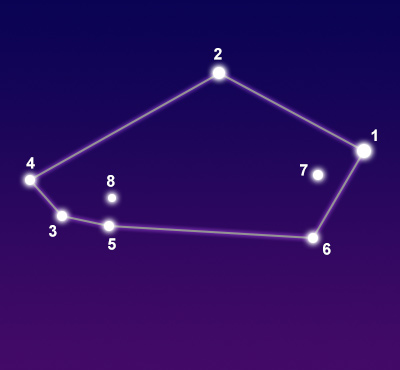
points of interest below © Sea and Sky
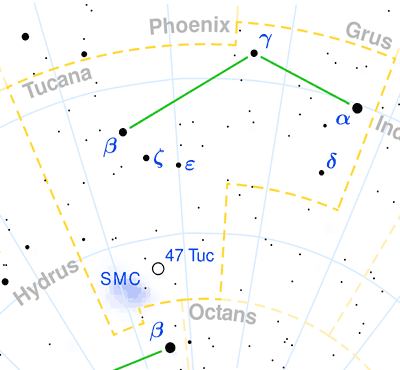
© Torsten Bronger CC BY-SA 3.0
Gamma Tucanae
Zeta Tucanae
Beta Tucanae
Epsilon Tucanae
Delta Tucanae
Nu Tucanae
Eta Tucanae
N/A
N/A
N/A
N/A
N/A
N/A
N/A
Yellow-White Giant Star
Yellow-White Dwarf Star
Multiple Star System
Blue-White Subgiant Star
Binary Star System
Red Giant star
White Dwarf Star
3.99
4.23
4.25
4.49
4.51
4.91
5.00
Tucana contains only 2 stars brighter than magnitude 4. The brightest is Alpha Tucanae with a visual magnitude of 2.86. It is a binary star system located approximately 200 light years from Earth. At magnitude 3.99, Gamma Tucanae is the second brightest star. It is a yellow-white giant star only 75 light years from our solar system. The third brightest star is Zeta Tucanae with a magnitude of 4.23. It is a yellow-white dwarf star located about 28 light years from Earth.
There are no Messier objects in the constellation Tucana, although it does contain a few interesting deep-sky objects. The most notable of these is the Small Magellanic Cloud, or SMC. The SMC is an irregular dwarf galaxy located only 7,000 light years outside our own Milky Way galaxy. It is one of the few galaxies that can be seen with the naked eye and is one of the most distant deep-sky objects that can be seen without binoculars. Another dwarf galaxy in this constellation is the Tucana Dwarf. It is a dwarf spheroid galaxy located about 3.2 million light years from Earth. Other objects include a globular star cluster known as 47 Tucanae (NGC 104), an open star cluster called NGC 265, and a spiral galaxy known as NGC 406.
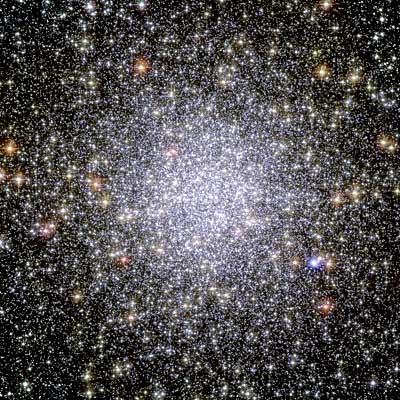
© NASA, ESA, and the Hubble Heritage / CC BY 4.0
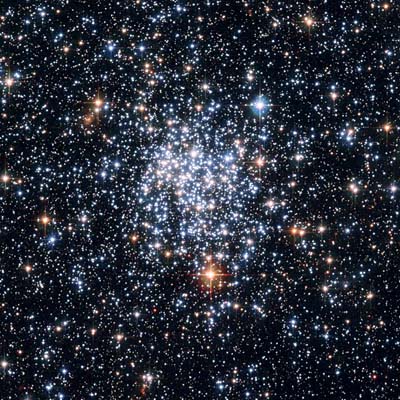
the Hubble Space Telescope
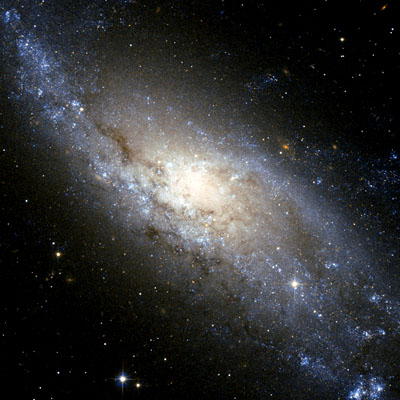
the Hubble Space Telescope



